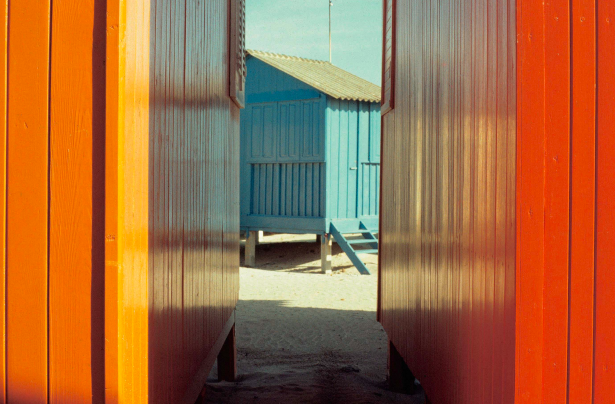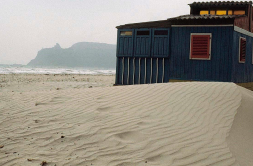The summer city
︎
︎︎
The seaside architecture of Poetto
︎
︎︎ 13th october 2020

The seaside architecture of Poetto in the research of Ugo La Pietra and in the images of Giancarlo Cao.
Between 1913 and 1986, the Poetto beach housed a village of spontaneous constructions: wooden cottages enlivened by bright colours, refined decorations and symmetrical volumes.
More than just simple bathing cabins, the huts were designed to be real habitable summer residences. Their features responded to the needs of practicality, organisation and versatility. The interior spaces were basic but perfectly functional: the front part was used as a living area and the reclining windows allowed it to be transformed into an open loggia; the rear part, on the other hand, was furnished with bunk beds in order to maximise the space, thus becoming a genuine sleeping area.
︎︎
︎
These houses belong to those minor and peripheral architecture that, starting from the 1960s, Ugo La Pietra analysed and catalogued within a broader research that later merged into the Osservatorio di Cultura Balneare, a study centre dedicated to marginal cultures such as seaside design and souvenirs. The casotti (wooden huts) would be presented in 1980 in the exhibition “Cronografie. Il tempo e la memoria” (Chronographies. Time and memory) at the Venice Biennale.
The architect-designer was truly captivated by the lively sense of creativity of these works, by the personalisation and invention that was revealed in every decorative and design element. This creative practice was the result of the dedication of the owners who, thanks to the help of local artisans, built the hut using the same design-construction model, which would then be adapted according to the personal tastes of each citizen-bather, with imaginative decorations and bright colours.
La Pietra, in the essay Le altre culture (The other cultures), published by Corraini Edizioni, brings out the unique character of these architectural works characterised by a simple but coherent urban structure, by colours that bring to mind bathing cabins and refined decorations such as the balustrade and the tympanum, architectural elements that evoke the style of bourgeois villas.
︎
︎︎










Lastly, the author cannot help but compare the uniformity and order of the graceful landscape formed by the wooden huts with the more cultured but vulgar and chaotic architecture of the concrete houses that were being built on the Cagliari coast.
Among the many interesting observations, La Pietra defines the model of the Poetto villas as "an interesting application of popular memory in the construction practice of this particular type of architecture". Today, there remains the nostalgic memory of an ephemeral architecture that is still an example for the future landscape planning of Poetto
︎ ︎︎︎︎













